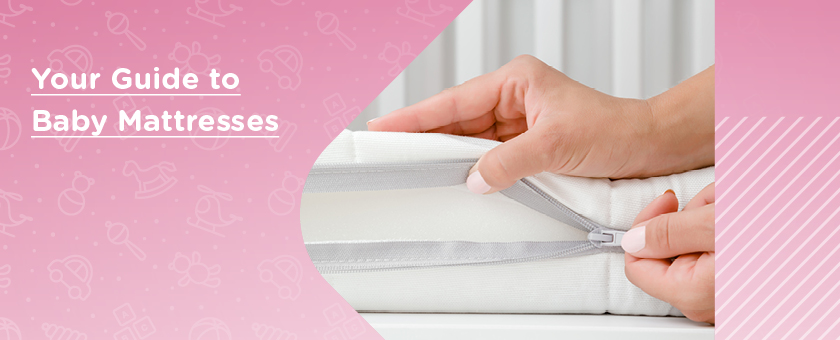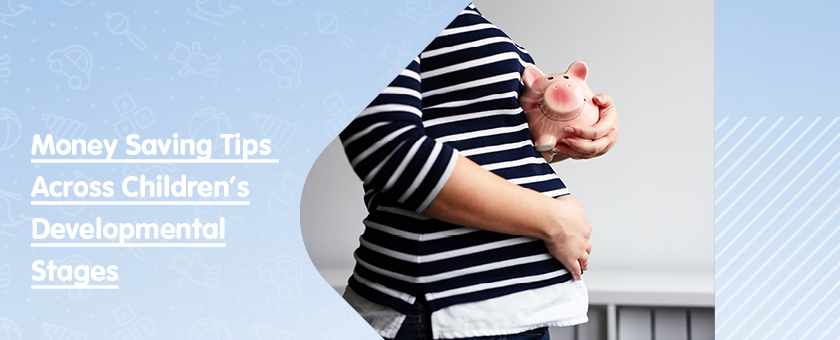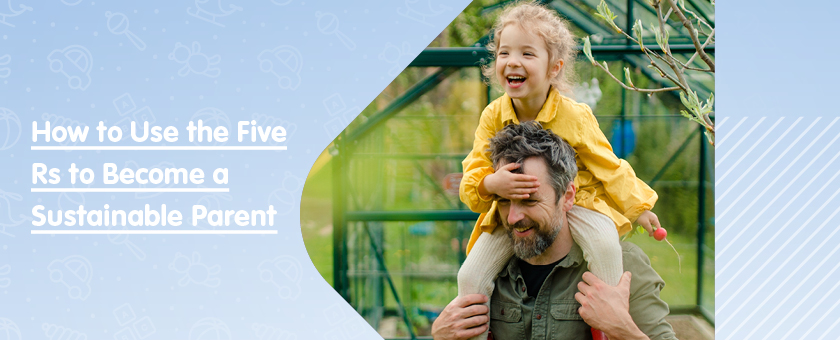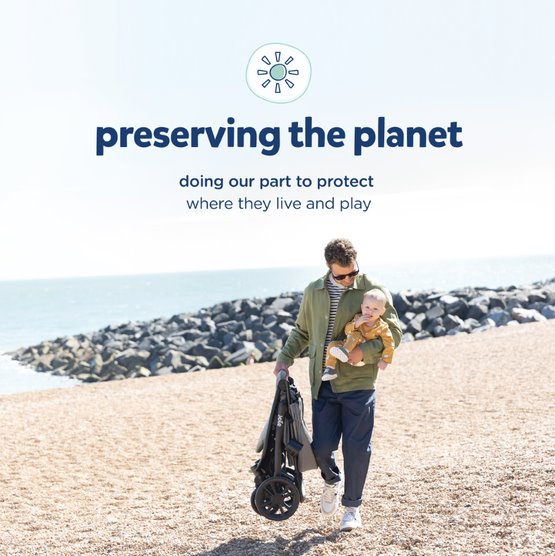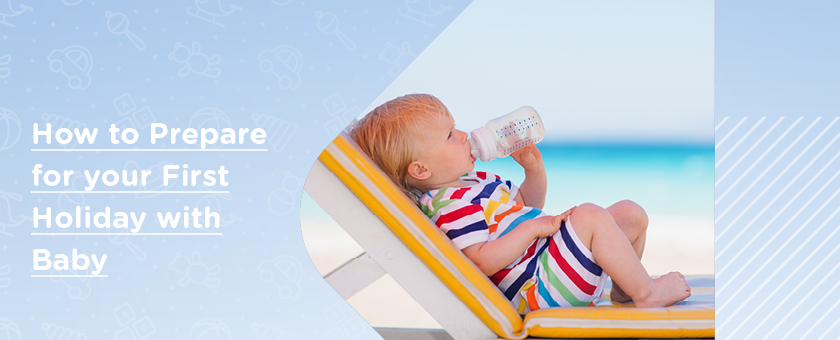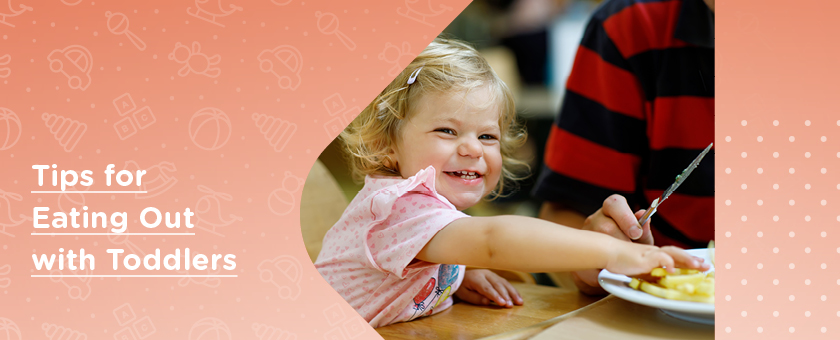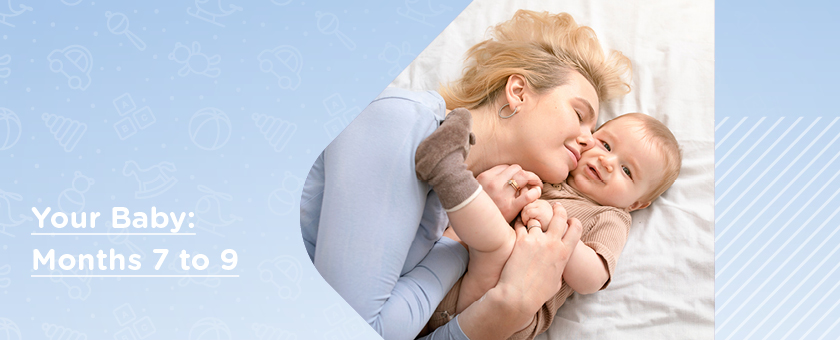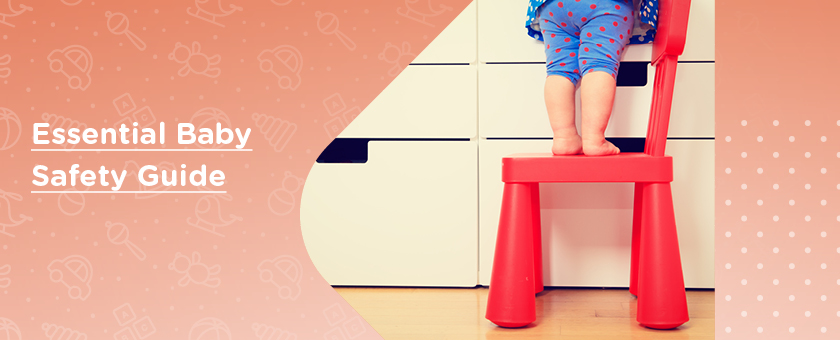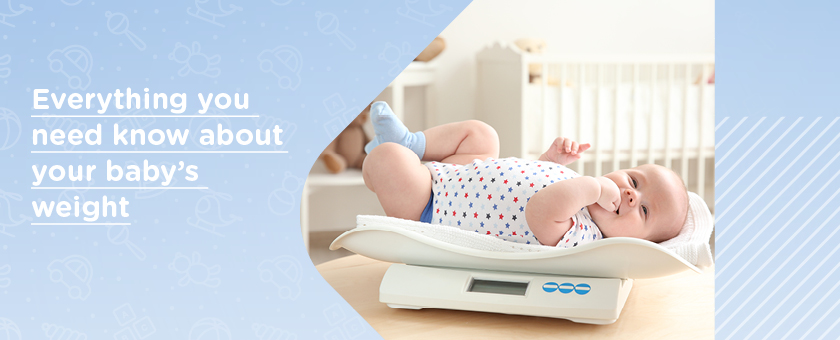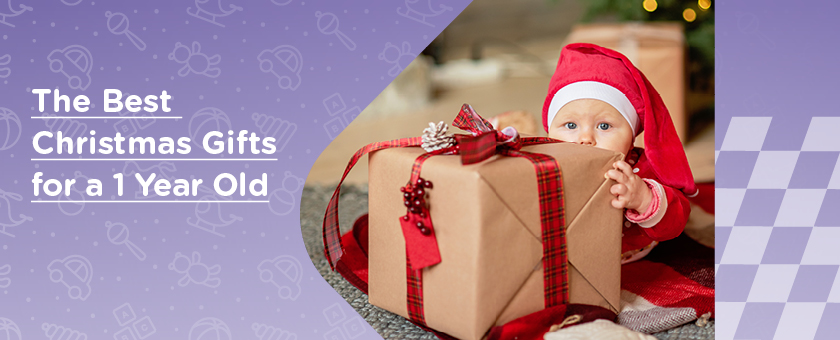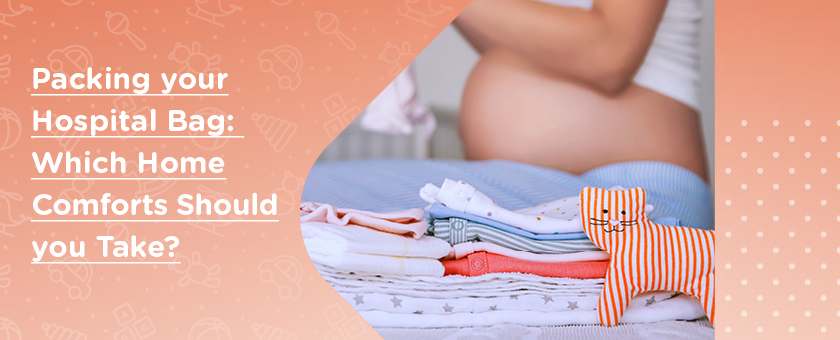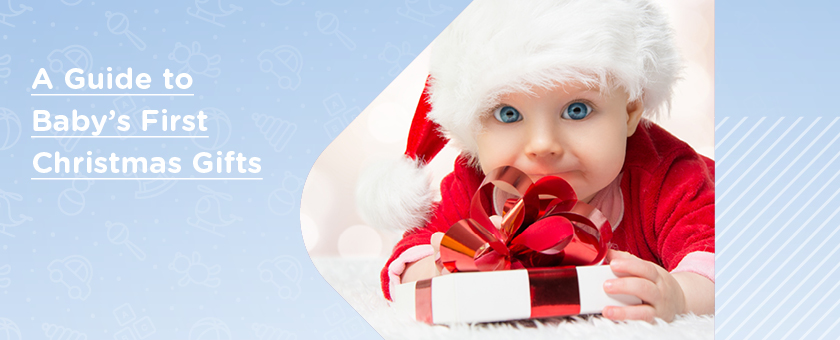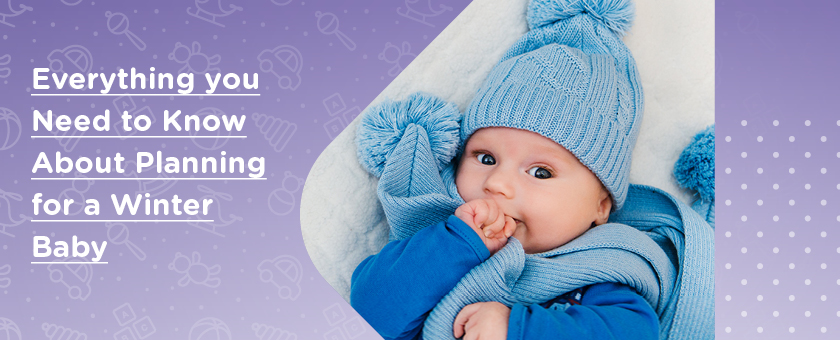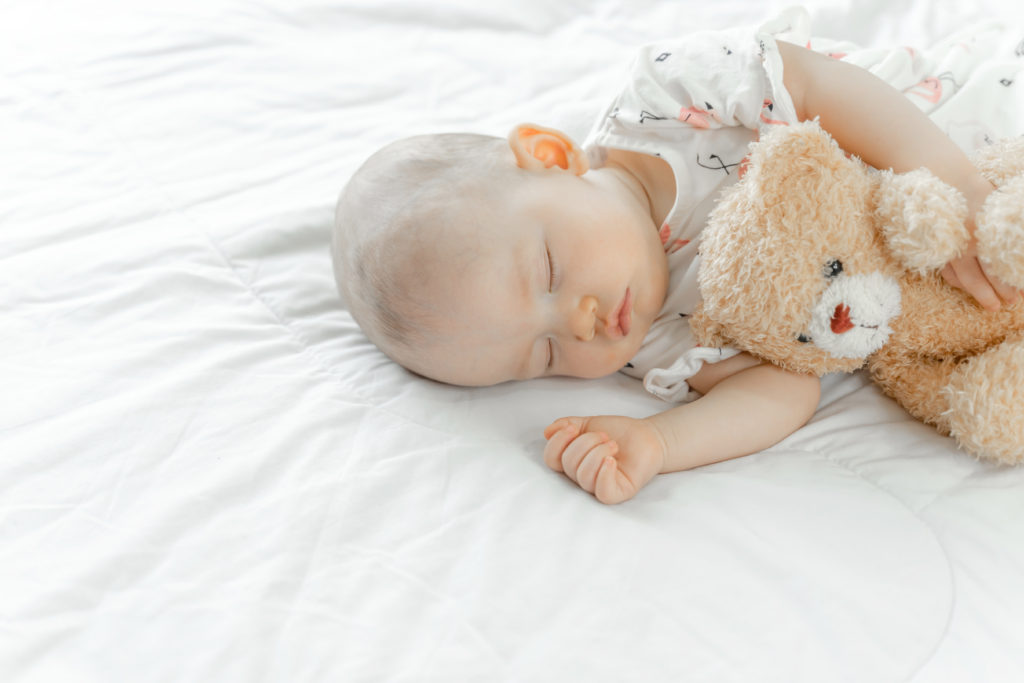
Your sweetheart’s mattress could be the secret ingredient in helping them have a comfy night’s sleep. With so many varieties, fabrics and a lot of conflicting opinions out there, it can make purchasing the best baby mattress a tricky one. It’s also important to remember – there’s no standard size baby mattress – it all depends on the cot, crib or Moses basket you choose. Given how many hours your little one is going to spend on their mattress, plus how important sleep is for their development – we want to help you pick the right one! In this guide, we’ll take you through everything you need to know, so that you choose the best baby mattress for your precious angel.
The need-to-knows before shopping for a baby mattress
Your little one’s mattress should be:
- The correct size for a cot, crib or Moses basket
- Firm and supportive
- Waterproof and washable
- Breathable and hypoallergenic
The size
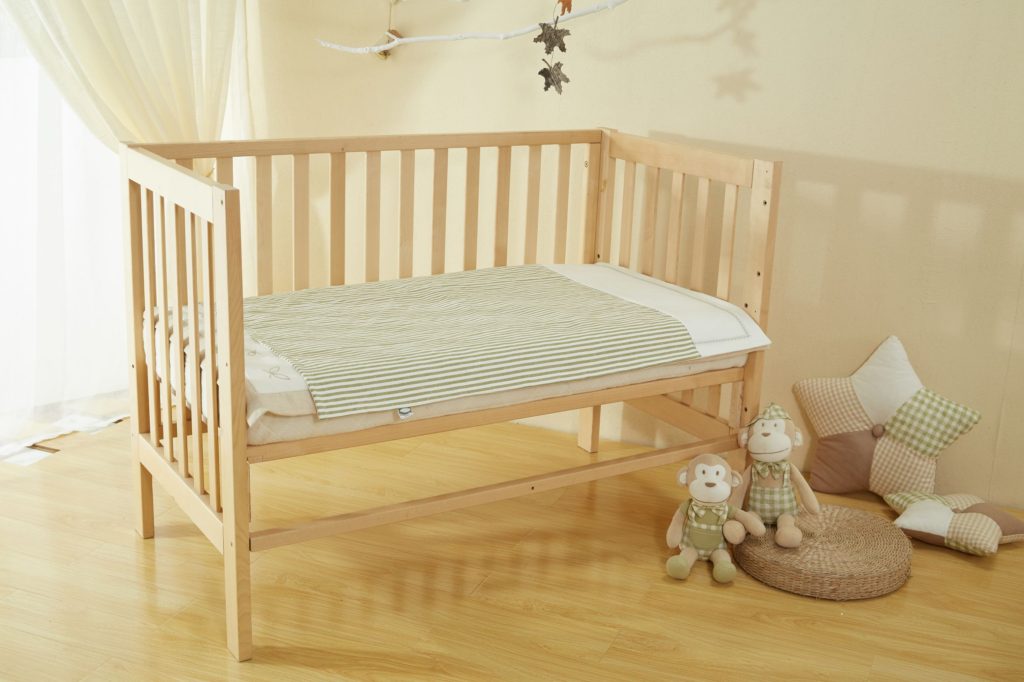
For your bub’s safety – it’s recommended that until 6 months old they sleep in their crib in mummy and daddy’s room. After they reach 6 months or until they can hold their own head up – it’s time to consider a cot or cot bed for your growing munchkin.
Cots are manufactured differently depending on the supplier, brand and year they were produced. There are several factors which affect the safety of a little one’s mattress – and size is a key one. Getting the best baby mattress that sits perfectly snug in your babe’s sleeping den is essential for safety reasons. A gap bigger than 3cm (1.2 inches) should be avoided. What does that mean? No gaps big enough for your babe’s teeny tiny self to get stuck in! This way you can tuck your baby in comfortably so that they’re snug as a bug. With this in mind – we recommend purchasing your crib, cot or Moses basket first. Once you’ve done this, then you can buy the mattress so you can be sure it’s the perfect fit.
You should also consider the depth of the mattress too. The space between the top of the mattress and cot should be big enough to stop your little adventurer from trying to climb out. However, similar to the size recommendations, it’ll probably also come with a user guide advising on what the depth should be as well. It’s worth noting that mattresses for cribs and Moses baskets will usually be thinner.
Luckily, many cots and cribs are sold with mattresses designed specially to fit them. For those that aren’t, more often than not, they’ll have a sticker on the base advising on the correct size. So, make sure you do your research to find the exact size needed for your bundle of joy – nothing is more important than their comfort!
Mums and dads listen up! Remember that any mattress you go for should conform to BS 1877-10: 1997. Plus, it’ll also need to be at least 8cm to 10cm deep to support your little one’s head whilst they snooze away.
The firmness
Don’t forget the firmness of your bub’s mattress is just as important as the size! It’ll need to be firm, flat and in mint condition – with no signs of wear and tear or sagging. At Kiddies Kingdom, we stand by the motto – the firmer the better! Even if it feels stiff to you, trust us, your cherub will soon adjust to it. We recommend testing the firmness by pressing down the centre of the mattress as well as the edges. Here – look for how quickly the mattress springs back into shape once you take your hand off – the faster the better of course! Why? Well, snoozing babes make an impression on the foam, and it can be tricky for them to change positions if their mattress retains its shape. That’s why a firmer mattress is a Godsend for your little one’s comfort.
As a firmer mattress is recommended, it’s advised to not go for a second-hand one as they tend to lose their firmness after a couple of years. It’s always best to purchase a new mattress if you’re unsure of a second-hand one’s history – your sweetheart’s safety is always a worthwhile investment.
The different types
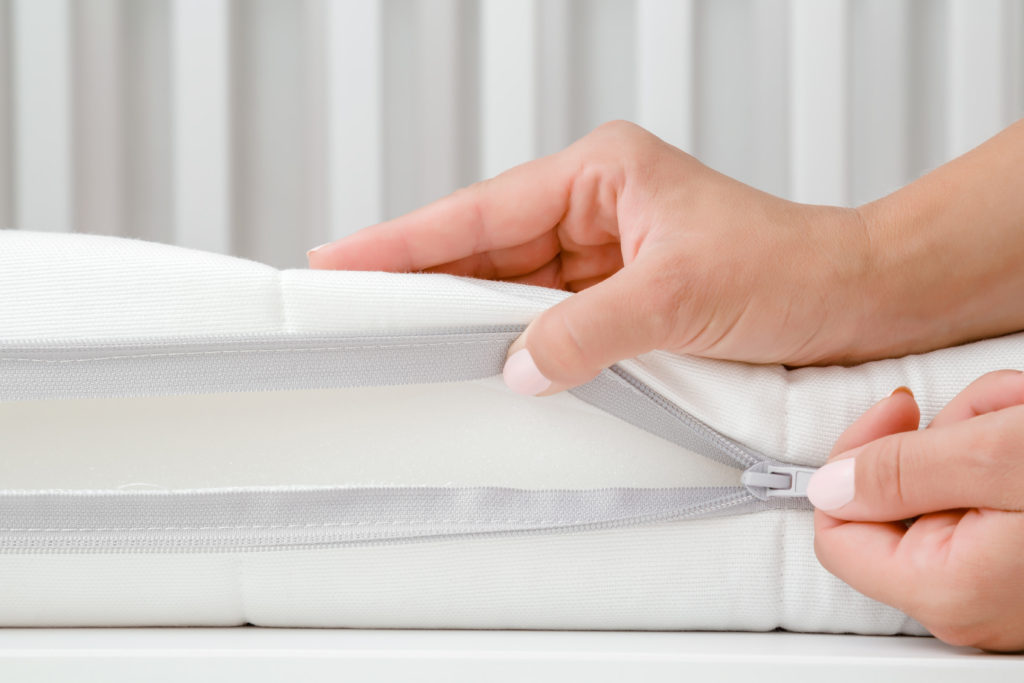
There are four main types of baby mattresses out there but what are the differences between them all? We’ll take you through this:
Foam
Foam mattresses are typically the most budget-friendly choice when it comes to baby mattresses. They’re also generally the lightest style and are super easy to clean as they often have a PVC wipe-clean fabric on one side. Plus, they also offer great support for your little one. What more could you want?!
Although, we must mention that they do tend to lose their shape over time, so we recommend them more for short term use for example in a Moses basket or crib. To add – they’re also deemed to be less breathable than some other alternatives on the market.
Sprung
Sprung mattresses have a coil-sprung inside with layers of foam/felt cushioning to allow for increased airflow. Although they’re on the more expensive side, sprung mattresses are still a popular option with mums and dads as it’s a common and traditional style. You may even have it on your own bed – so why not twin with your babe?
Double-sided
Double-sided mattresses are increasing in popularity due to their long-lastingness and good value for money – music to any parent’s ears! This type of mattress also tends to have a firmer side for newborns to pre-schoolers, along with a slightly softer side which can be flipped for when your not so little one gets older.
Organic
This style of mattress is made from chemical and allergen-free materials such as bamboo, coconut fibres and natural latex – so it’s all natural! Coconut fibre in a baby mattress makes the perfect material for a strong mattress. Instead of individual springs, it uses layers of coconut coir. What does this do? It reduces pressure points and provides even support for your little one.
Out of all baby mattresses, they’re one of the firmest styles – so you can be sure your babe will be comfortably supported all night long. Even better news, they’re made without any of those pesky chemicals, and are naturally fireproof thanks to their breathable wool. This also helps to regulate your bub’s body temperature. Whilst organic mattresses are slightly heavier on the pocket, at the same time, you can’t put a price tag on your babe’s comfort!
Mattress aftercare
Once you’ve picked the best baby mattress, it’s important that you look after it properly so that it lasts for as long as possible and stays in good condition for your bundle of joy. We recommend airing your baby’s mattress a couple of times a week by removing all of the covers for a couple of hours until you next put your babe down on it. To keep it squeaky clean – it’s best to spot-clean or wipe it down when needed. If you’re lucky, some even have machine-washable covers which are removable. Remember – those little leaks in the middle of the night are bound to happen so investing in a mattress protector is always a good idea.
Now that you’re clued up on what to look out for when it comes to buying the best baby mattress – you can go ahead and make an informed decision. As newborns tend to sleep between 11 to 16 hours a day on average, it’s important their snoozing space is sturdy, comfortable and supportive. In no time – your little one will be having the sweetest of dreams on their mattress.

